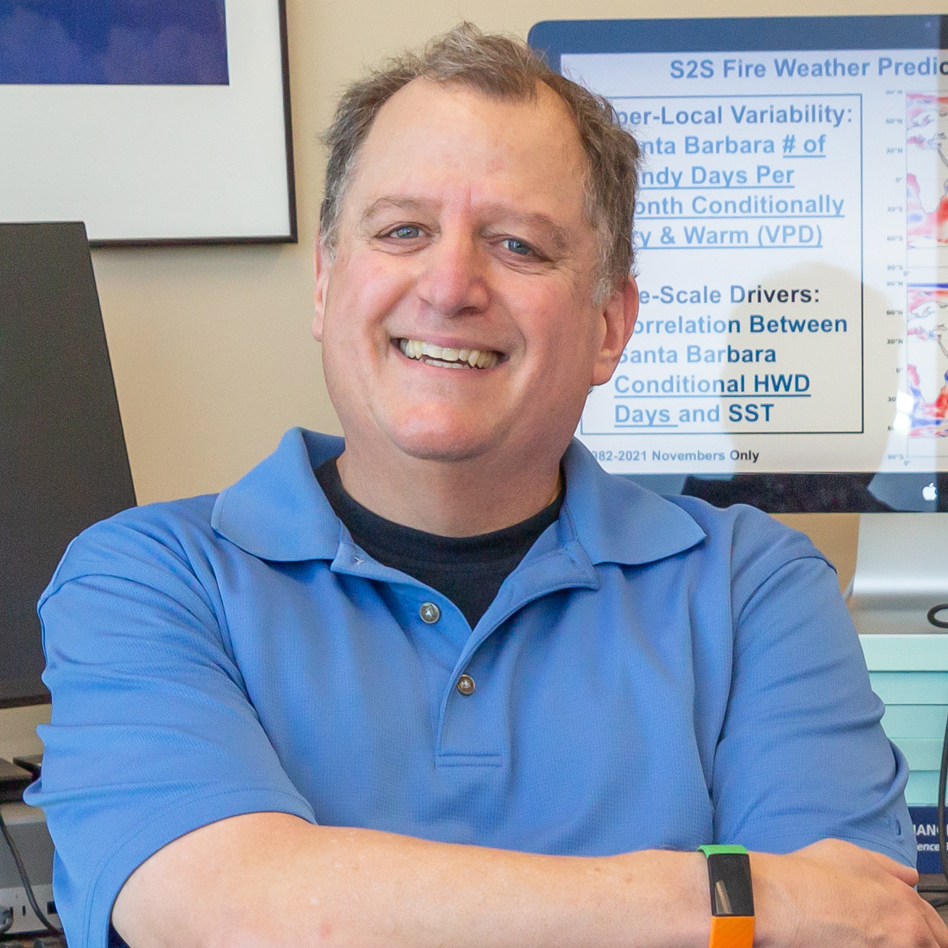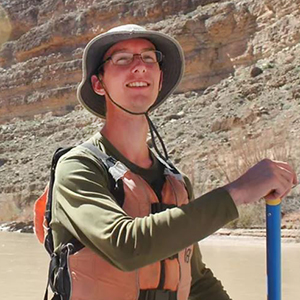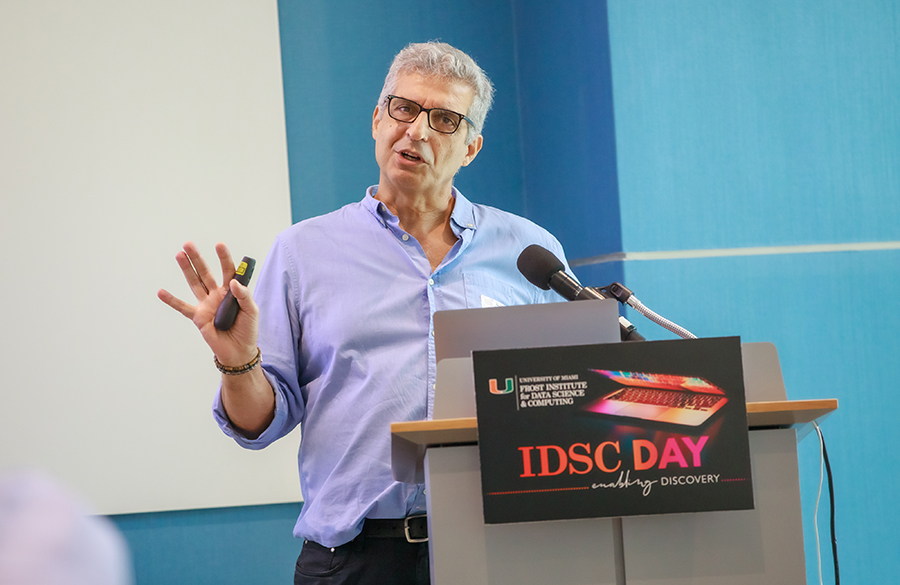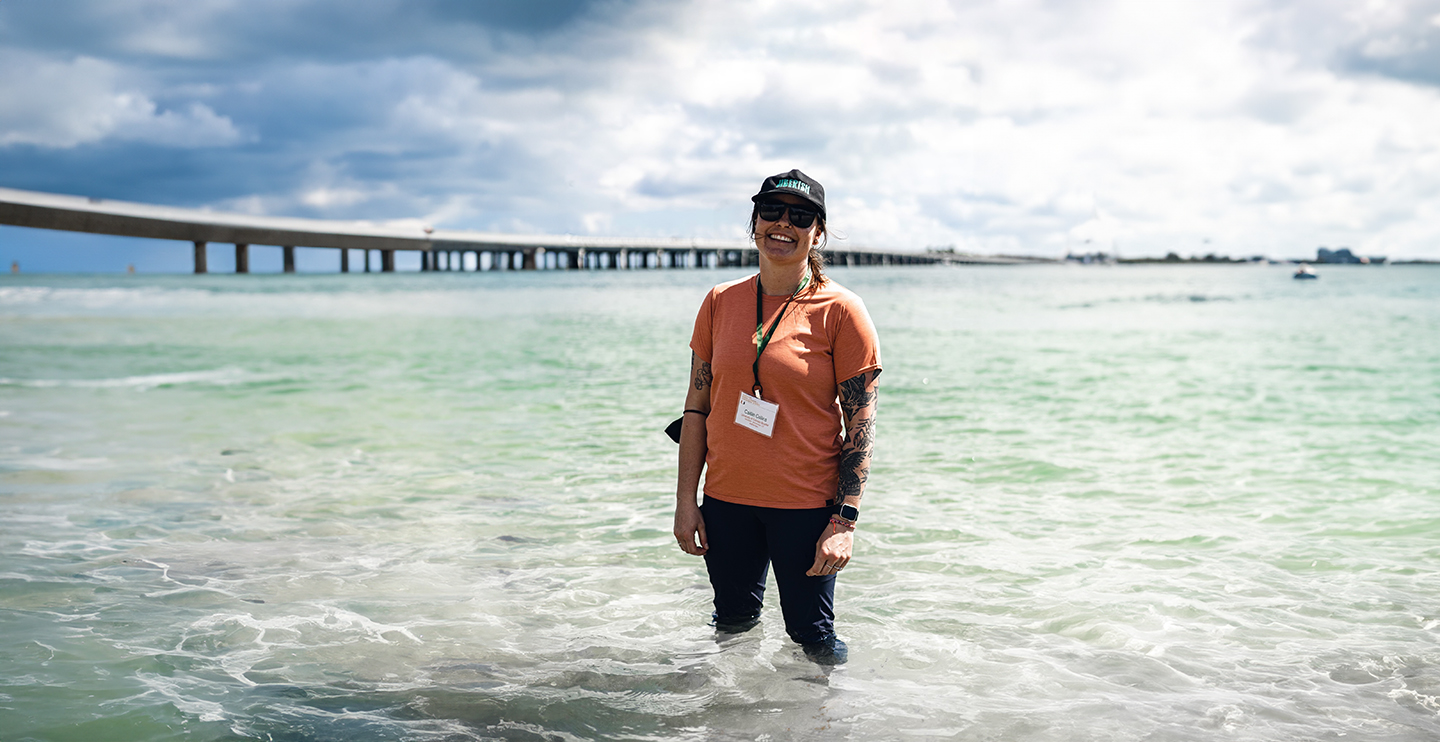As a PhD student in atmospheric sciences at the University of Miami Rosenstiel School of Marine, Atmospheric, and Earth Science, Cait Martinez wants to unravel how much of the El Niño-Southern Oscillation (ENSO) evolution and predictability is driven by deterministic ocean dynamics versus chaotic atmospheric processes.
As she set out to tackle this question, it quickly became clear that machine learning was becoming a key tool in her field. Eager to sharpen her technical skills, she applied to the Frost Institute for Data Science and Computing (IDSC) IDSC Fellows Program and soon discovered the yearlong fellowship would reshape her research and her outlook in ways she never expected.
“Within a year, I went from a complete machine learning novice to submitting abstracts for major professional conferences,” she said. “I was looking for technical training, but at the end of the day, it was transformative for me because I gained confidence in my ability to be a researcher.”
Fellowship Fosters Cross-Disciplinary Collaboration
As an IDSC Fellow, Martinez suddenly found herself in rooms with people with diverse interests from departments across the University that she’d never worked with before. “It changed how I approach my own research,” Martinez said. “I was exposed to new perspectives. The networking, collaboration, and empowerment made me feel I could tackle my research questions from a completely different angle.”
At first, she would sit in meetings with these colleagues and just listen, unfamiliar with their work. Soon, she found herself not only receiving guidance and inspiration from them but helping in return. “As we continued meeting with folks at IDSC, I started being able to say, ‘Hey, this problem you’re running into now, I have an idea for that, maybe you should think about this…’ It became a collaborative two-way street to solve our problems even though we were working on our own projects individually.”
Inside the IDSC Fellows Program
 Every year, the IDSC selects four undergraduate and graduate students across the University who are working on cross-disciplinary research projects and need help with algorithms, data, or learning how to use supercomputers. The Fellows are paired with a computational mentor and given access to The U’s supercomputers. They also receive a modest cash award.
Every year, the IDSC selects four undergraduate and graduate students across the University who are working on cross-disciplinary research projects and need help with algorithms, data, or learning how to use supercomputers. The Fellows are paired with a computational mentor and given access to The U’s supercomputers. They also receive a modest cash award.
When Martinez initially learned about the program during her first semester as a PhD student in 2022, she excitedly checked in with her advisor, atmospheric scientist Dr. Ben Kirtman, now Dean of the Rosenstiel School. He told her to come back in two or three years.
She tucked the idea away and when the email announcing applications had opened for the 2024-2025 academic year landed in her Inbox, she again brought it up to her advisor. This time, they decided she should apply. “I thought it was important to gain these skills before I leave UM, but I wanted to do it in the structured mentorship, interdisciplinary environment that IDSC provides,” Martinez said.
Applying Machine Learning to ENSO
 Martinez joined the 2024-2025 cohort under the mentorship of Dr. Samuel Goldberg, a Rosenstiel marine geoscientist assistant professor and an IDSC core faculty member. Her Fellows project, titled “ENSO Preconditioning versus Noise as the Forecast Evolves: A Machine Learning Diagnosis,” tests whether subsurface ocean precursors or chaotic atmospheric noise exert more control in steering ENSO events.
Martinez joined the 2024-2025 cohort under the mentorship of Dr. Samuel Goldberg, a Rosenstiel marine geoscientist assistant professor and an IDSC core faculty member. Her Fellows project, titled “ENSO Preconditioning versus Noise as the Forecast Evolves: A Machine Learning Diagnosis,” tests whether subsurface ocean precursors or chaotic atmospheric noise exert more control in steering ENSO events.
“It’s a theoretical problem in some ways but really important for climate prediction and understanding the teleconnections associated with ENSO, which can affect anything from hurricane seasons on the East Coast to global food security,” she said. “I’m looking to see how much ENSO predictability is limited by ocean dynamics versus the chaotic atmosphere in the state-of-the art global circulation models.”
From the Rockies to the Tropics
A Colorado native who once gauged the promise of winter ski days by El Niño forecasts, Martinez earned a bachelor’s degree in geology at the University of Colorado at Boulder and a master’s degree in hydrologic science and engineering at the Colorado School of Mines before modeling watersheds for an environmental consulting firm. Today, she lives in South Miami with her husband, a graphic designer, and their German Shepherd-Husky mix, Kuma.
“I’ve always wanted to know about the world and how everything works together,” Martinez said. “All of these systems are interconnected, so for me, it was a natural progression to scale up from tiny watersheds to regional and global climate problems.”
A Watershed Moment (Her Machine Learning Breakthrough)
Given the computational demands of her research—fully coupled climate model ensembles that require weeks of supercomputer time—Martinez sought a more efficient way to test hypotheses. Her solution? She teamed up with a collaborator to develop a machine learning interactive ensemble model for ENSO that can test scenarios in just minutes on her laptop.
“This has really helped the trajectory of my Ph.D. research become much more efficient because I’m able to test hypotheses without wasting computer resources,” she said. “It helps me decide what I choose to look at next in my research.”

IDSC Fellows Steering Committee Chair and Rosenstiel School Professor of Atmospheric Science Mohamed Iskandarani reflected: “Cait came into the IDSC Fellowship at an ideal moment: she had become an expert in atmospheric science, was articulate about the disciplines’ core research question, and was now facing a computational challenge. IDSC was able to step in and help her overcome the computational/algorithm hurdles, so she could carry on with her atmospheric research. I am delighted she was able to get so much out of the internship and turn its outcome into a research article and presentation.”
A Can’t-Miss Opportunity
After benefitting so much from the IDSC Fellows program, Martinez is determined to spread the word. “I encourage others to apply,” she said. “It’s a unique opportunity at UM, an interdisciplinary mentorship where you maintain your expertise and gain powerful new tools.”
The fellowship can be particularly useful for those looking for access to supercomputers for their research. “You can expand your methodological toolkit in a great learning-based environment with mentors who understand both the technical and scientific sides,” she said.
Martinez, now in her fourth year as a Ph.D. student, marvels on how far she has come and has no doubt that, when she wraps up her Ph.D. in two years, her newfound skills—and confidence—will provide exactly the climate she needs for a successful career.
“The ability to rapidly prototype ideas and test hypotheses to make climate science more actionable and accessible is really exciting,” she said. “I see machine learning applications as a powerful complement to traditional physics-based modeling, not a replacement, and having fluency in both approaches makes me a more versatile researcher and more competitive in today’s job market.”
by Lauren Comander




